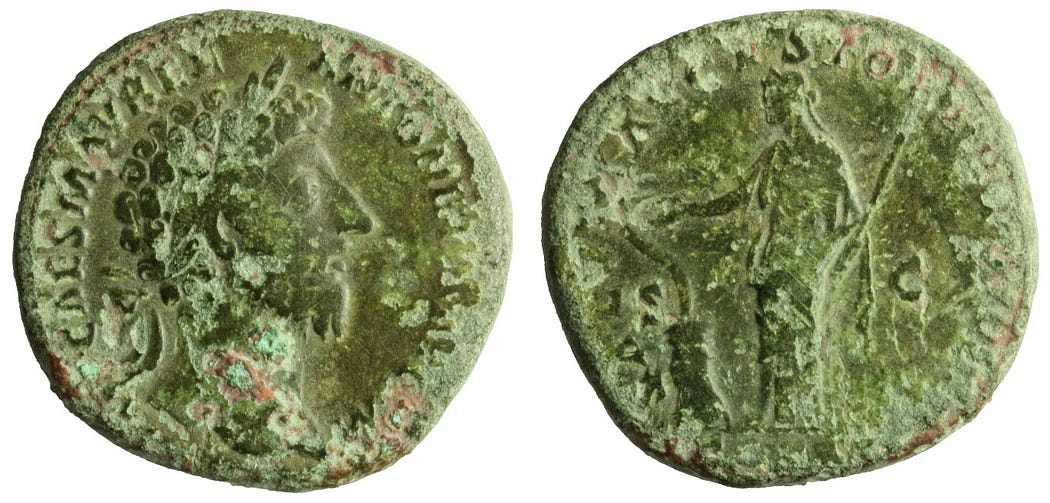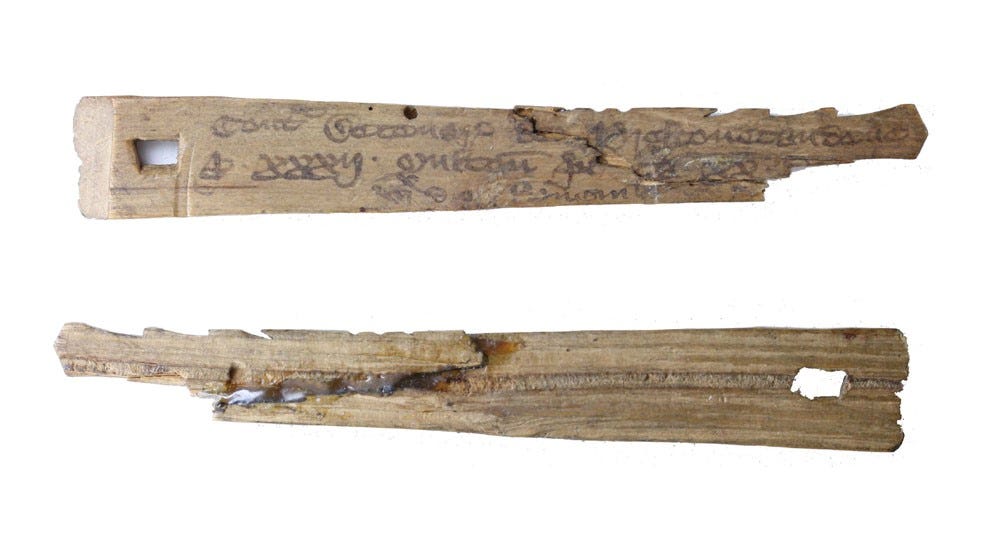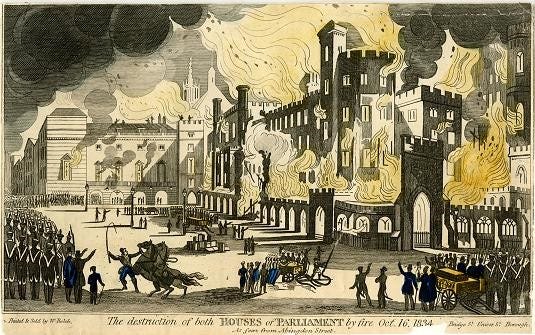In my last blog, which covered the early history of money, we saw how gold and silver coins were imposed on people by states, via taxation and conquest. In this blog, we shall see what happened when those states failed…
The Romans brought their currency to Britain when they colonised the island. When they retreated, in 410AD, the British people were so accustomed to Roman coins that they continued to use them. The imperial currency survived far longer than the Roman Empire itself.

Roman British coins (SOURCE: Wikimedia Commons)
Over the course of several centuries, those Roman coins slowly fell out of circulation. Some were spent abroad, to buy imports, and never seen again. Others were melted down to make jewellery and ornaments. By the time the Middle Ages arrived, there were very few coins left in Britain.
At the same time, people still bought and sold things using gold and silver coins. This posed a problem: How could people trade in gold and silver, if there was very little of the stuff in the country?
The answer was simple: Debt.
Let’s use an example. Say you buy a horse from me, and we agree that horse is worth five gold pieces, but you don’t have five gold pieces (because there is so little gold in circulation). In this case, I would give you the horse and you would owe me five gold pieces. You would be in my debt. In time, you may acquire the gold to pay me back. Or, alternatively, you may acquire other things I might like. Perhaps you give me a sheep, which we agree is worth two gold pieces, and a pig, which we agree is worth three gold pieces.
In this example, we have traded using gold, even though no such gold exists.
This works well as long as we know and trust one another. And, in the Middle Ages, that was usually the case. People lived in strong communities, in which everyone knew each other, and knew who to trust.
But, as society expanded, there arose situations in which a handshake was not sufficient to guarantee a debt would be repaid. People needed to create contracts, to ensure their debts were honoured. They needed the state to secure those contracts in law.
In a time when literacy levels were low and paper was rare, these contract took the form of a tally stick: A length of wood, usually made from hazel or willow:

Medieval tally sticks (SOURCE: Wikimedia Commons)
This is how I put it in my new novel, “Money Power Love”:
Tally sticks were created to acknowledge the existence of a debt. Debtor and creditor would take a length of wood, cut notches to indicate the amount which was owed, and then split it into two parts which could be reconnected like pieces of a puzzle.
The creditor took one half, known as the “Stock”, which was emblazoned with the debtor’s seal. The creditor, therefore, was known as the “Stock holder”.
The debtor took the other half, which was known as the “Ticket Stub”.
Stock and stub acted as a contract; an agreement that the stub holder would repay their debt to the stock holder; either in gold, silver, goods or services.
Tally sticks were used to pay wages to workers and taxes to the state. People used them to buy and sell items, as if they were coins. They were, after all, an IOU; a pledge by whoever issued the stock to pay gold to whoever happened to possess it. The stock, therefore, had a value in gold, and so could be spent as if it was actual gold.

Money Power Love (SOURCE: Joss Sheldon)
The tally was used as far afield as China, monasteries issued them as receipts when people deposited valuable items, and the exchequer paid them to people who supplied goods to the king.
The tally stick was the de facto currency across Europe until the 1400s, when literacy levels improved and paper became more affordable. At that point, debt contracts began to be written on paper, which was ripped in half, much like tally sticks before them. These paper contracts also began to circulate– they were the forebears of the modern banknote.
The death of the English tally began in 1782, when it was decided that the exchequer would stop accepting tally sticks, but it wasn’t until 1834 that the Bank of England finally destroyed its tallies. Two workmen carted them across London, before burning them in furnaces located beneath the Palace of Westminster. Those furnaces became so hot, they heated the floors above them. Those floors caught fire. The resultant blaze was so great, it caused the House of Commons and the House of Lords to burn to the ground!

The fire of Westminster (SOURCE: Wikimedia Commons)
The ebook version of Money Power Love is available from this website, here.
Physical copies are available from Amazon, Barnes & Noble, Watestones, and all good online retailers…
Also in this blog series...
1. “STATES CREATED MARKETS. MARKETS REQUIRE STATES. EACH REQUIRES THE OTHER.”
SOURCE
1) “Early accounting: The tally and the checkerboard” by W. T. Baxter


Comments ()